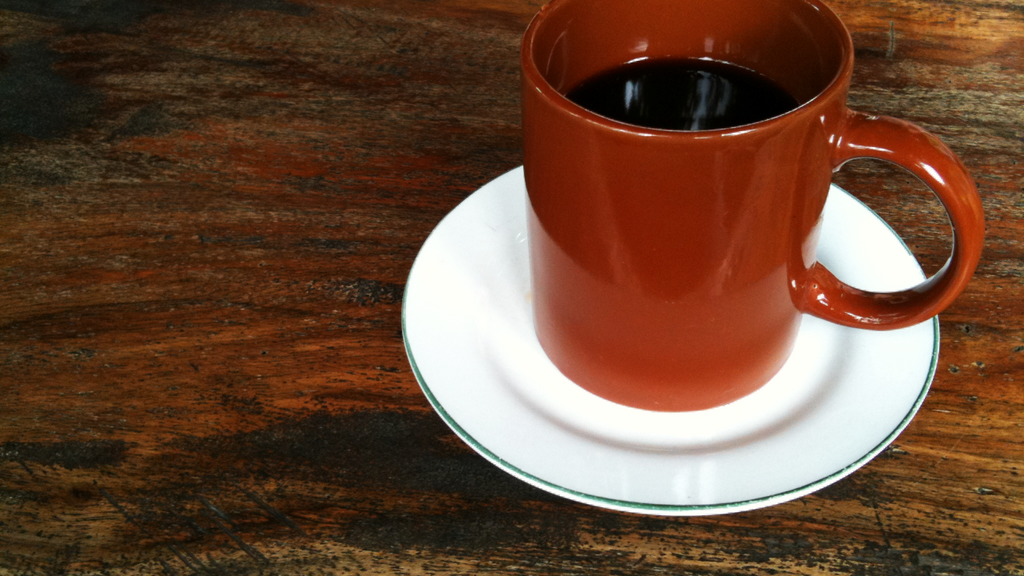4 Coffee Brewing Basics - Step 2 - Grinding Coffee

We recently introduced our four coffee brewing basics. We talked a little bit about step one, which is making sure that you have great coffee beans. Step two is all about grinding coffee. There’s more to it than just crushing beans.
Grinding Coffee is Really Important!
In my opinion, grinding coffee is going to have more of an effect on the flavor of your brew than almost any other variable you can pick. Water temperature, amount of grounds, brewing method, all of those things do certainly affect coffee, but a small change when you’re grinding coffee has more of an effect than almost anything else you do.
 Always make sure you are grinding coffee right before you brew it. All those great smells you get from freshly ground coffee are all of the flavors and aromas escaping from the bean. We want those flavors and aromas in our coffee cup, not escaping before we brew. Some people will say that when you grind your coffee, you can taste a flavor difference within fifteen minutes of when it’s ground, so do not buy pre-ground coffee. It’s always going to be better to grind your coffee right before you brew it.
Always make sure you are grinding coffee right before you brew it. All those great smells you get from freshly ground coffee are all of the flavors and aromas escaping from the bean. We want those flavors and aromas in our coffee cup, not escaping before we brew. Some people will say that when you grind your coffee, you can taste a flavor difference within fifteen minutes of when it’s ground, so do not buy pre-ground coffee. It’s always going to be better to grind your coffee right before you brew it.
Picking A Coffee Grinder
There are two major types of coffee grinders on the market. One is called a blade grinder and one is called a burr grinder. There are lots of other options out there like grinders specific to brewing espresso and some that are more “all purpose”, but for our discussion, we’ll talk about just blade coffee grinders and burr coffee grinders.Blade Grinders
A blade grinder is something that most people have in their house. It has a little whirly blade that spins around and chops up the beans. There’s a button on the outside or on top that will turn on and off the whirly blade. If a blade coffee grinder is what you have, that’s certainly a better solution than buying pre-ground coffee.
Blade grinders will work great for certain brewing methods, such as a drip coffee pot or a french press. Where they tend to fall short is in some of the pour over brewing methods that are a little bit more finicky when it comes to grind size.

One of the challenges with a blade grinder is that you end up with really fine particles of coffee and really coarse particles of coffee. It’s impossible to keep consistent particle size with a blade grinder. That’s why it’s so difficult to grind for some of the pour over methods like a V60 or a Chemex. One day you’ll grind too coarse and you’ll end up with weak coffee. The next day, you’ll grind too fine and it will be super strong and bitter.
Burr Grinders

Burrs on a conical burr grinder. Coffee gets crushed between the cone burr (the middle star-shaped piece) and the ring burr (the circle around the outside)
If you want to really up your coffee game, the best thing to do is to find a burr grinder. A burr grinder has two metal pieces – usually it’s a ring around the outside and then a cone in the middle. One of those pieces will spin around and it’ll crush the beans between the two burrs. This method results in a much more consistent grind size than a blade grinder. Most burr grinders can adjust how close those burrs are together which results in fine or coarse grind sizes.
Some burr grinders can adjust from a very fine grind (for an Aeropress, as an example) to a more coarse grind (French Press). Either way, if you get a burr grinder or a blade grinder, you’re going to have better coffee if you grind right before you brew your coffee.
Adjusting Your Grind
Brewing coffee is all about extracting oils that are in the bean. When we grind finer, we have smaller particles of coffee that we’re brewing with Those smaller particles of coffee result in more surface area for water to come in contact with. They also fit closer together so it takes a longer amount of time for the water to filter through the grounds. So, the finer I grind, the more surface area to contact for a longer time results in more oils being extracted and a “stronger” cup of coffee.
On the opposite extreme, if I grind coarser, there’s going to be less surface area for the water to come in contact with. The water is also going to go through the coffee beans faster and in so doing, spend less time in contact with the coffee beans and extract less oils. The result is a lower extraction level and possibly, if you go to far, weak tasting coffee.

How the fineness of your coffee grind affects extraction (or perceived “strength”) of coffee.
That’s the bottom line on coffee brewing and on coffee grinders. stick around for our next two coffee brewing basics where we’ll talk about water and we’ll talk about some really popular coffee brewing gear that’s on the market.
